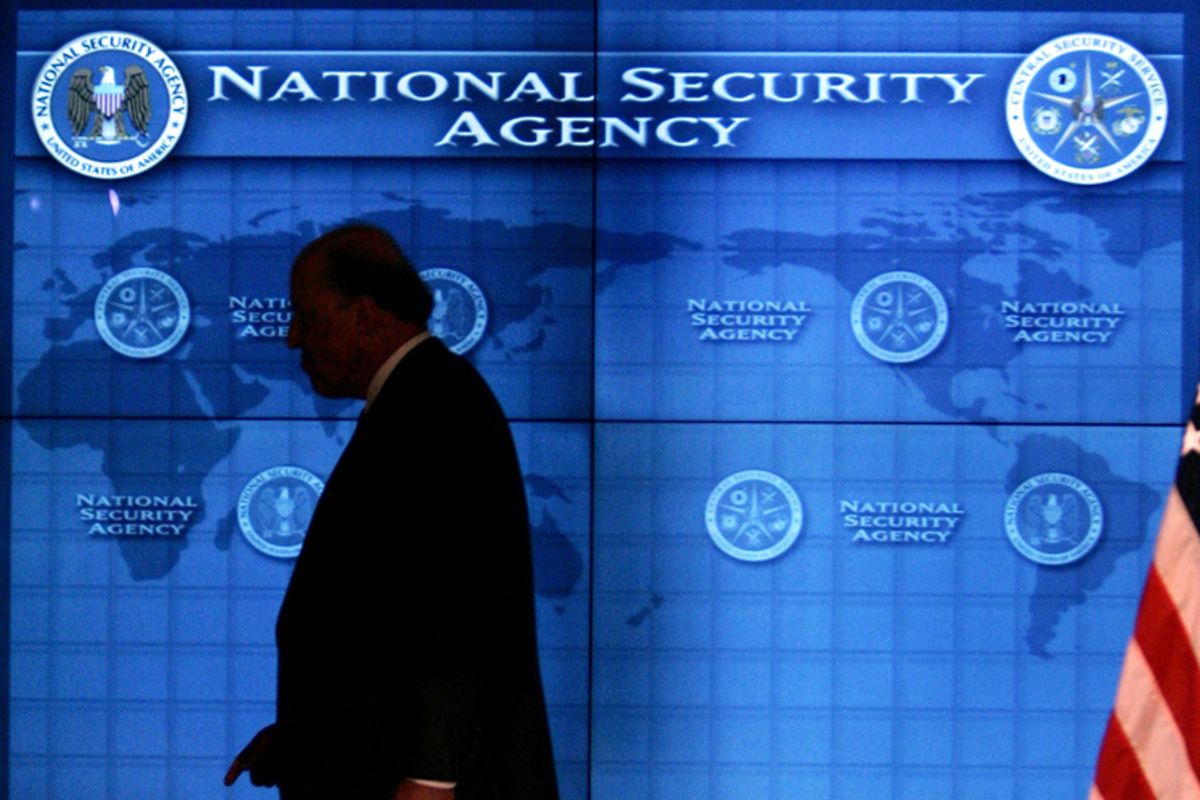As the House votes on whether to defund NSA dragnet collecting this afternoon, there appears to be yet another effort — like James Clapper’s denials about collecting data on millions of Americans — to misinform Americans about the way the government uses Section 215 of the PATRIOT Act as part of a program to identify people in America talking to alleged terrorists.
“To date, no Court has ever ordered the disclosure of FISA materials,” the government asserted in a 2012 legal motion in the case of Somali-American Basaaly Saeed Moalin. “And there is nothing extraordinary about this case that would warrant it be the first to disclose such materials.”
Yet there was something extraordinary about Moalin’s case -- and the motion that successfully defeated Moalin’s challenge to evidence collected under the FISA Amendments Act -- that would lead to his conviction for material support of terrorism earlier this year.
Moalin’s case was one of the only descriptions ever submitted in the context of a criminal trial pertaining to the dragnet collection of all Americans’ phone records first disclosed by a document leaked by Edward Snowden and published in the Guardian last month. In a case where San Diego Judge Jeffrey Miller might be one of just two judges outside the FISA Court ever to review how that dragnet evidence of mere phone contact serves to establish that an American is the agent of a foreign power, the government falsely suggested the case was routine.
As recently as July 17, government witnesses have presented Moalin’s case as one of two declassified uses of the Section 215 dragnet to identify a person with ties to alleged terrorists. In the other, the government used the 215 dragnet database to identify Adis Medunjanin as one of Najibullah Zazi’s accomplices in a plot to bomb New York’s subway already in the works.
On July 18, NSA Director Keith Alexander said the dragnet has been useful in just 13 cases (the government originally said it had been used in around 10 cases), presumably over the 7 years since the program has been in place.
Given that the government treats just these two uses as declassified, it suggests Moalin and Medunjanin were the only two that were noticed and challenged in pretrial motions.
In Medunjanin’s case, the government reply was submitted in secret; Judge Raymond Dearie’s order rejecting Medunjanin’s challenge repeated the detail that no court had ever disclosed FISA materials to defendants, but he relied on precedents attesting to the lack of complexity of the case in approving the government use of FISA-derived material. And in Medunjanin’s case, according to FBI ‘s Stephanie Douglas, the FBI “was already aware of Medunjanin"; the Section 215 did not provide the primary authorization for further investigation into him.
In Moalin’s case, the 215 dragnet appears to have provided the key evidence to start wiretapping an American even before he started sending money to al-Shabaab (though the government motion is very heavily redacted, so the FISA applications may include other unknown details)—indeed, even before the State Department declared al-Shabaab a foreign terrorist organization.
Moreover, while (as they appear to have done in the Medunjanin case) the government argued the surveillance of Moalin was “relatively straightforward,” that’s not the picture offered by several details in the government response to Moalin’s challenge. It reveals that eight different FISA judges signed off on parts of the surveillance that would incriminate Moalin. There were orders or warrants in 11 different FISA dockets. It took the government nine sections and 15 footnotes to lay out its probable cause case that Moalin was an agent of a foreign power properly targeted under FISA.
Assuming that section included a description both of the FBI’s justification for the dragnet database in the first place, as well as evidence explaining why phone contacts justified a FISA warrant in this case, that probable cause section is the one that is, contrary to the government’s claims, extraordinary. That is, the government was presenting a novel application of a range of secret orders as used in practice. It was presenting its argument that it could collect phone records on all Americans and based on the associations shown therein start wiretapping an American citizen. This may well have been a novel application, one that merits close constitutional review as implemented.
And yet the government told Judge Miller — who, given the secrecy of FISA court filings, would have had no way to dispute them — that this case was not at all extraordinary. Miller was obligated to make a perhaps unique constitutional review, but the government misled him about how routine such orders really were.
Miller’s opinion rejecting Moalin’s challenge remains secret, more than a year after he issued it.
In the buildup to the House vote today on a Defense Appropriations amendment offered by Rep. Justin Amash to defund this activity, the government complained, in a rare statement opposing the amendment, that it was not the result of “informed, open, or deliberative process.”
And yet, at every stage of its implementation of this dragnet program, the government has been misinforming and hiding secrets. Including, it appears, in one of the few cases where a judge actually reviewed whether this program met constitutional standards.



Shares